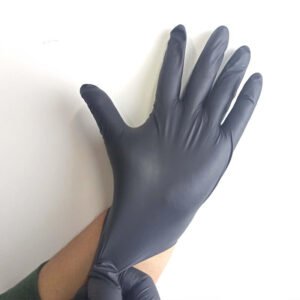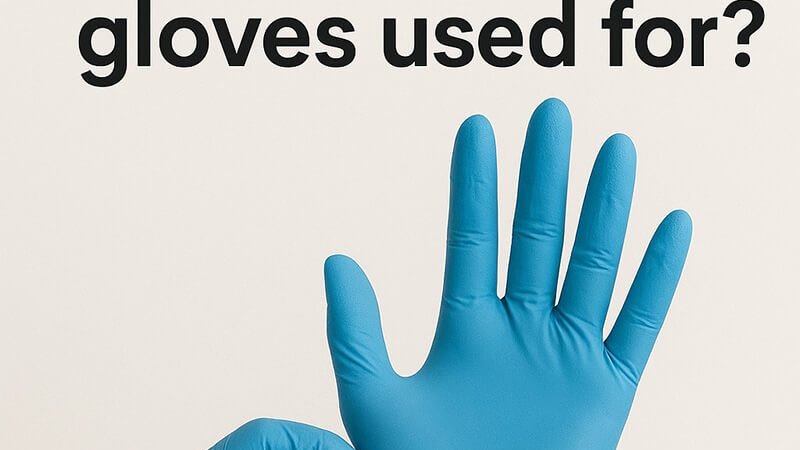What are Examination Gloves Used For? A Comprehensive Guide
Table of Contents
1. Introduction to Examination Gloves
Examination gloves are disposable protective handwear designed to create a barrier between the wearer’s hands and potentially harmful substances, pathogens, or contaminants. These essential medical devices have become indispensable across numerous industries, serving as a first line of defense against cross-contamination and infection transmission.
Originally developed for medical use in the late 19th century, examination gloves have evolved significantly in terms of materials, manufacturing processes, and applications. Today, they represent a critical component of personal protective equipment (PPE) protocols worldwide, with billions of pairs manufactured annually to meet growing global demand.
2. Primary Uses of Examination Gloves
2.1 Medical and Healthcare Settings
The most recognized application of examination gloves is in medical and healthcare environments. Healthcare professionals rely on these gloves for numerous procedures and patient interactions:
Patient Examinations: During routine physical examinations, gloves protect both patients and healthcare providers from potential transmission of infectious agents. They enable healthcare workers to maintain sterile conditions while conducting thorough assessments.
Surgical Procedures: While surgical gloves are typically used for major operations, examination gloves serve important roles in minor surgical procedures, wound care, and pre-operative preparations.
Laboratory Testing: Medical laboratories extensively use examination gloves when handling blood samples, tissue specimens, and other biological materials that may contain infectious pathogens.
Dental Care: Dental professionals wear examination gloves during all patient interactions, from routine cleanings to complex dental procedures, ensuring protection against bloodborne pathogens and oral bacteria.

2.2 Laboratory and Research Applications
Scientific laboratories across various disciplines depend on examination gloves for safe handling of potentially hazardous materials:
Chemical Handling: Researchers working with corrosive chemicals, solvents, and reactive compounds use specialized examination gloves to prevent skin contact and chemical burns.
Biological Research: Microbiologists and biochemists wear gloves when cultivating bacterial cultures, handling genetic material, and working with potentially infectious organisms.
Pharmaceutical Development: Drug development laboratories require gloves to maintain sterile conditions during compound synthesis and testing procedures.
2.3 Industrial and Commercial Uses
Beyond healthcare and research, examination gloves serve important functions in various commercial sectors:
Food Service Industry: Restaurant workers, food processors, and catering staff use gloves to maintain food safety standards and prevent contamination during food preparation and service.
Cleaning Services: Professional cleaning staff wear gloves when handling cleaning chemicals, sanitizers, and potentially contaminated surfaces.
Automotive Industry: Mechanics and automotive technicians use gloves to protect against oils, lubricants, and other automotive fluids while maintaining dexterity for detailed work.
3. Types and Materials of Examination Gloves
3.1 Latex Gloves
Natural rubber latex gloves offer exceptional flexibility and tactile sensitivity, making them ideal for procedures requiring precise manipulation. They provide excellent barrier protection against biological contaminants and fit snugly to the hand’s contours.
However, latex gloves can cause allergic reactions in sensitive individuals, leading many facilities to seek alternative materials for broader safety compliance.

3.2 Nitrile Gloves
Nitrile examination gloves have gained significant popularity due to their superior chemical resistance and latex-free composition. These synthetic gloves offer excellent puncture resistance and maintain their protective properties across a wide temperature range.
Nitrile gloves are particularly favored in healthcare settings where latex allergies are a concern, and in industrial applications where chemical exposure is likely.
3.3 Vinyl Gloves
Vinyl gloves represent a cost-effective option for applications requiring basic barrier protection. While they offer less elasticity and tactile sensitivity compared to latex or nitrile alternatives, they provide adequate protection for many routine tasks.
These gloves are commonly used in food service, light cleaning, and non-critical healthcare applications where frequent glove changes are necessary.
4. Manufacturing Process and Equipment
The production of examination gloves involves sophisticated manufacturing processes that ensure consistent quality and safety standards. Modern facilities utilize advanced examinational glove machine technology to achieve high-volume production while maintaining strict quality control.
Dipping Process: The primary manufacturing method involves dipping hand-shaped aluminum molds into liquid polymer solutions. These molds are heated to cure the material, forming the glove structure.
Quality Testing: Each batch undergoes rigorous testing for barrier integrity, tensile strength, and dimensional accuracy. Automated inspection systems detect defects and ensure compliance with international safety standards.
Packaging and Sterilization: Finished gloves are packaged in controlled environments to maintain sterility. Some applications require gamma irradiation or ethylene oxide sterilization before distribution.
The examinational glove machine systems used in modern manufacturing facilities incorporate advanced automation, reducing production costs while improving consistency and reducing contamination risks during the manufacturing process.
5. Safety Considerations and Best Practices
Proper Selection: Choosing the appropriate glove material and size is crucial for effective protection. Healthcare facilities must consider the specific risks associated with different procedures and select gloves accordingly.
Correct Usage: Proper donning and doffing techniques prevent contamination during glove changes. Healthcare workers receive training on these procedures to minimize infection transmission risks.
Regular Replacement: Examination gloves are designed for single use and should be changed between patients or tasks to prevent cross-contamination.
Allergy Awareness: Facilities must maintain awareness of staff and patient allergies, particularly to latex, and provide appropriate alternative materials when necessary.
6. Environmental Impact and Sustainability
The widespread use of disposable examination gloves presents significant environmental challenges. Billions of gloves are discarded annually, contributing to medical waste streams and environmental pollution.
Waste Reduction Strategies: Healthcare facilities are implementing waste reduction programs, including proper sizing to reduce overuse and exploring reusable alternatives for appropriate applications.
Biodegradable Materials: Manufacturers are developing biodegradable glove materials that maintain protective properties while reducing long-term environmental impact.
Recycling Programs: Some facilities participate in specialized medical waste recycling programs that process used gloves into other plastic products.
7. Conclusion
Examination gloves serve as a fundamental component of infection control and personal protection across numerous industries. From their critical role in healthcare settings to their applications in food service, laboratories, and industrial environments, these protective devices continue to evolve to meet changing safety requirements and user needs.
As manufacturing technology advances, including improvements in examinational glove machine efficiency and capabilities, the industry continues to develop better materials, improve production processes, and address environmental concerns. The future of examination gloves will likely focus on enhanced protection, improved sustainability, and cost-effective manufacturing solutions.
Understanding the proper selection, use, and disposal of examination gloves remains essential for maximizing their protective benefits while minimizing risks and environmental impact. As global health awareness continues to grow, these humble yet vital protective devices will undoubtedly remain indispensable tools in our ongoing efforts to maintain safety and prevent disease transmission.
